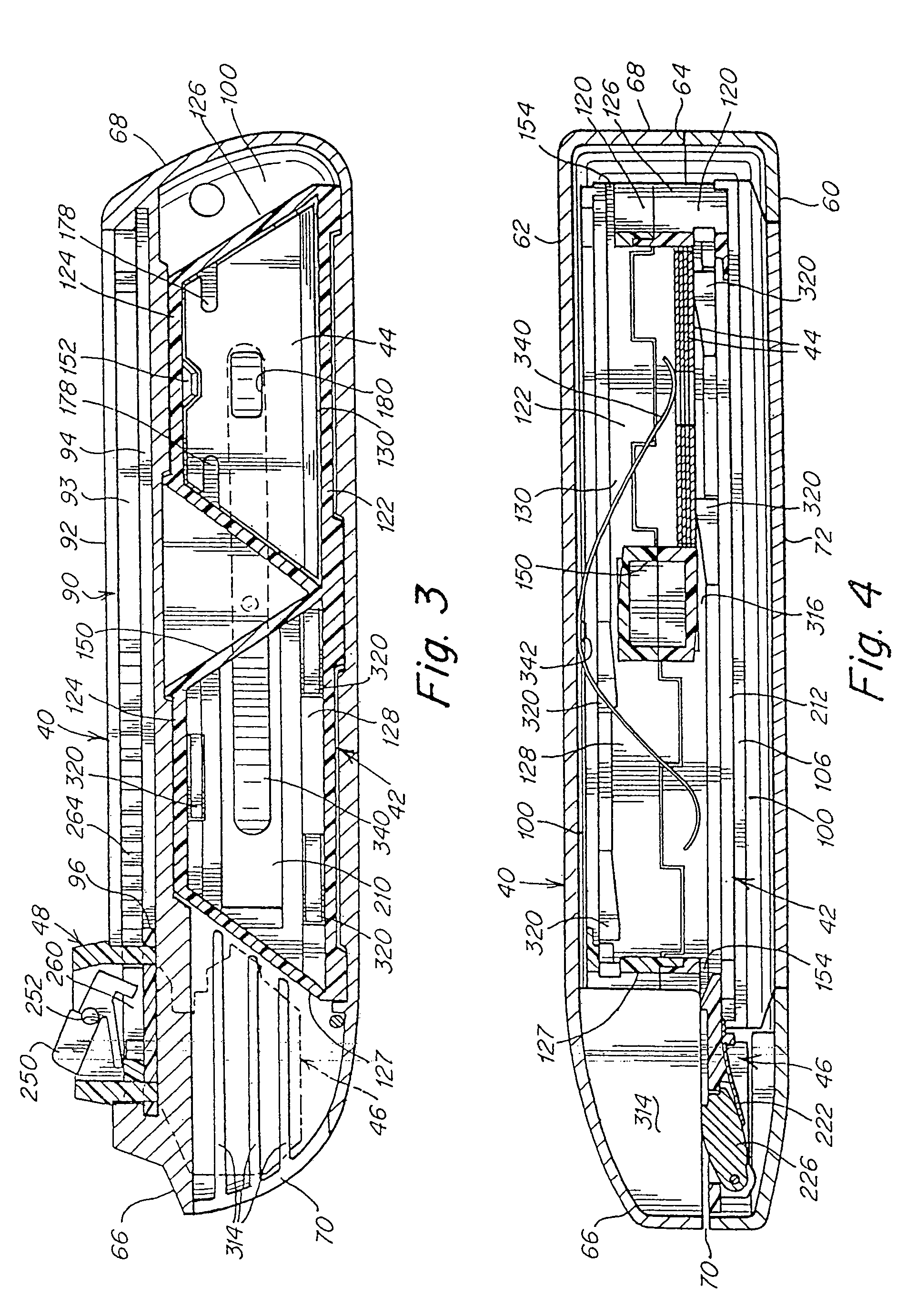Utility knife
a technology of utility knives and blades, applied in the field of utility knives, can solve the problems of difficult to properly mount the blade within the components of the case, frequent accidents, and inability to fully satisfy the user,
- Summary
- Abstract
- Description
- Claims
- Application Information
AI Technical Summary
Benefits of technology
Problems solved by technology
Method used
Image
Examples
case 40
Case 40
[0039]The case 40 is particularly illustrated in FIGS. 1–8. The case in the illustrated embodiment typically is a metal casting such as die casting of aluminum or zinc and is composed of two halves or shells 60 and 62 that may be secured together by any one or more of a variety of different fasteners such as screws, hook-like fingers, snaps, etc. to form an elongated housing for the utility knife components as well as a handle for operating the knife. In FIGS. 1 and 5–7, parting lines 64 along the top and bottom are suggested representing the mating edges of the two halves 60 and 62 of the case. In this description the end 66 of the case will sometimes be identified as the front end while the other end 68 will sometimes be identified as the back end of the case. The parting line 64 of the case runs longitudinally from end-to-end, and in the usual orientation of the case illustrated, is in a vertical plane. The front end of the case 66 has a blade slot 70 (see FIG. 4) through ...
PUM
 Login to View More
Login to View More Abstract
Description
Claims
Application Information
 Login to View More
Login to View More - R&D
- Intellectual Property
- Life Sciences
- Materials
- Tech Scout
- Unparalleled Data Quality
- Higher Quality Content
- 60% Fewer Hallucinations
Browse by: Latest US Patents, China's latest patents, Technical Efficacy Thesaurus, Application Domain, Technology Topic, Popular Technical Reports.
© 2025 PatSnap. All rights reserved.Legal|Privacy policy|Modern Slavery Act Transparency Statement|Sitemap|About US| Contact US: help@patsnap.com



